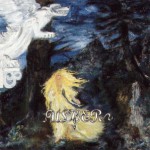
Ege Özgün (PHYS/PhD)
ozgun@fen.bilkent.edu.tr
Bootlegs can be nightmares for record companies but at the same time quite beneficial for bands, since they serve as free-of-charge advertisements for the latter. Before telling you what is even worse than a bootleg, let me first give a brief definition of what a bootleg is. A bootleg—in the music industry—is an unauthorized pressing of a collection of songs (usually live material) distributed and sold by third parties. This practice deeply annoys record companies, because in most cases it is really hard to prevent the distribution of bootlegs, which affects the companies’ profit to some extent. The bands themselves are generally invulnerable to any negative impact from bootlegs, since their contracts rarely offer them a share of album sales. An interesting example I can give regarding bootlegs is Swedish death metal band Unleashed’s album “Live in Vienna ’93.” The album was released by Century Media to counter a bootleg that had already been released and had inferior recording quality.
Now, before I drag this column into complete chaos, I shall stop and return to the question: what are worse than bootlegs? Well, the answer is “secret bootlegs.” As you may guess, I made this term up a few seconds ago. But although the term is made up, the items themselves are as real as this column you are holding between your hands or staring at on your screen. So what are they? They are similar to cheap copies of original albums, but the problem here is, it is nearly impossible to distinguish between secret bootlegs (SBs) and their originals. It is really very easy to tell the difference between a cheap copy and an original; a simple inspection of the booklet or in some cases even the cover will reveal it. But in the case of an SB, you cannot find a single alteration from the original. You may ask why this is worse than a bootleg, and the answer is that it puts us, the listeners, in a difficult situation. As I said, you can easily spot regular bootlegs and cheap  copies, so it’s up to you whether to buy them or not. I am generally okay with bootlegs since they usually offer unreleased materials from bands, but I hate cheap copies. My intention in buying original copies is not based on the common but incorrect idea that it will help the bands. No, not at all! It is extremely rare that a band will receive any percentage from their album sales. Of course if you are the Rolling Stones or some other gigantic band, then you make the rules, but that is the exception. So my intention in buying original copies is simply the fact that I enjoy it: going through every line of the booklet, staring at the cover art in detail….
copies, so it’s up to you whether to buy them or not. I am generally okay with bootlegs since they usually offer unreleased materials from bands, but I hate cheap copies. My intention in buying original copies is not based on the common but incorrect idea that it will help the bands. No, not at all! It is extremely rare that a band will receive any percentage from their album sales. Of course if you are the Rolling Stones or some other gigantic band, then you make the rules, but that is the exception. So my intention in buying original copies is simply the fact that I enjoy it: going through every line of the booklet, staring at the cover art in detail….
The curse of the SBs showed itself in the early 2000s, I believe. Two distinct examples I can give are Ulver-“Kveldssanger” (1996) and Cynic-“Focus” (1993). Both of these albums were out of print in the late 90s. Sellers on eBay were pricing them at over a hundred dollars, and they were really rare. Then suddenly a spell was cast, and you started seeing them everywhere.
Such a situation is absurd, because companies have to state when they are reprinting a record. It is impossible for a rare album to suddenly appear everywhere; it cannot be a forgotten shipment in some music store’s basement. So the possibilities are that either the music companies are reprinting rare albums without stating this, or some other company or entity is reprinting them without the knowledge of the original company or the band. This is really annoying, first of all because SBs are causing a drastic drop in the value of rare albums. This is really frustrating for the owners of such albums. Second, when you see one of these rare albums, you cannot be sure if it is an SB or an original. SBs are cheap, which makes them attractive to buyers, but when you see a high-priced version of a rare album, you can never be sure if it is an original or an SB.
 One solution I can suggest for this problem is checking the matrix number, which is printed on the back of the CD’s middle ring. (As far as I know, the problem of SBs is limited to CDs, and doesn’t affect LPs or cassettes.) I am not 100 percent sure about this method, but to my knowledge factory prints are required to have different matrix numbers. But the problem here is, to check the matrix number you have to look at the CD. So if you want to buy a rare CD from eBay or a similar website, you should ask the seller to give you the matrix number. Be aware, though, that this is still not a foolproof method.
One solution I can suggest for this problem is checking the matrix number, which is printed on the back of the CD’s middle ring. (As far as I know, the problem of SBs is limited to CDs, and doesn’t affect LPs or cassettes.) I am not 100 percent sure about this method, but to my knowledge factory prints are required to have different matrix numbers. But the problem here is, to check the matrix number you have to look at the CD. So if you want to buy a rare CD from eBay or a similar website, you should ask the seller to give you the matrix number. Be aware, though, that this is still not a foolproof method.
The music companies, or whatever unknown entities are responsible for SBs, are creating a lot of frustration for us, the beloved listeners, and I really want to learn the true story behind this shadow play. (I must admit that I haven’t done any detailed research on this subject. All my knowledge is based on my own experiences and the opinions shared by friends over past 10 years. So maybe the mystery behind SBs has already been solved.)
Stay connected to original copies, and of course to music.
